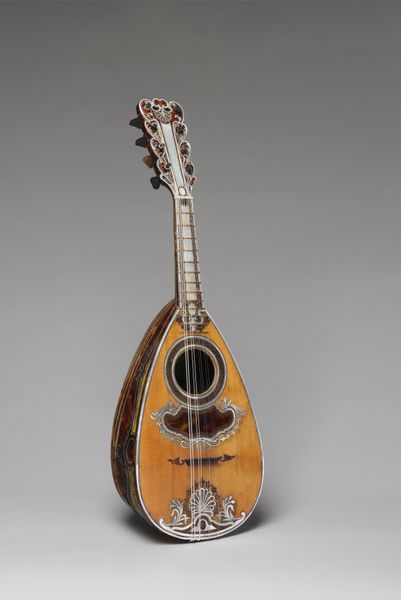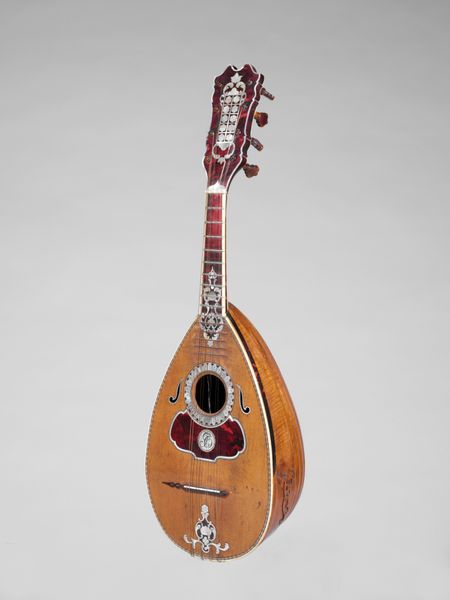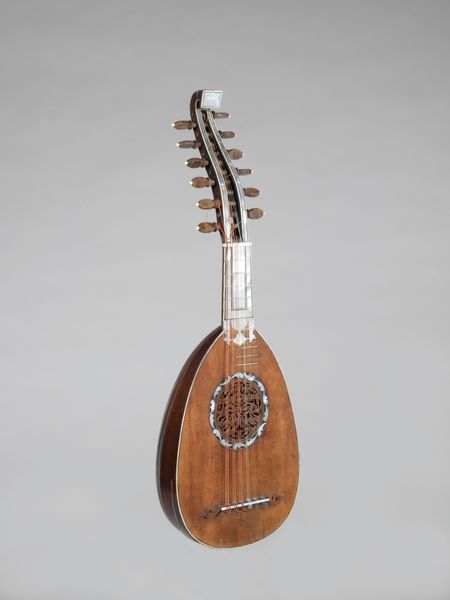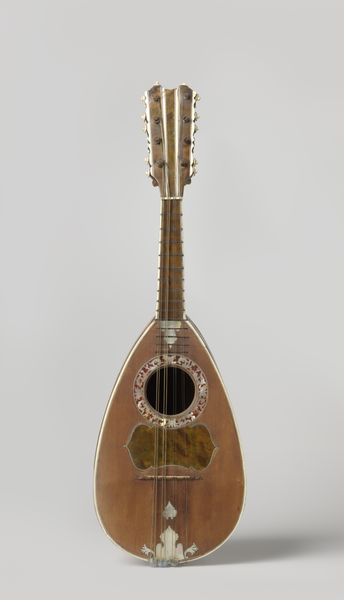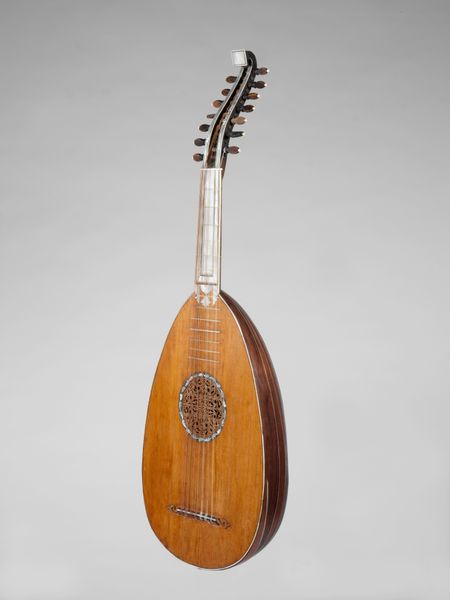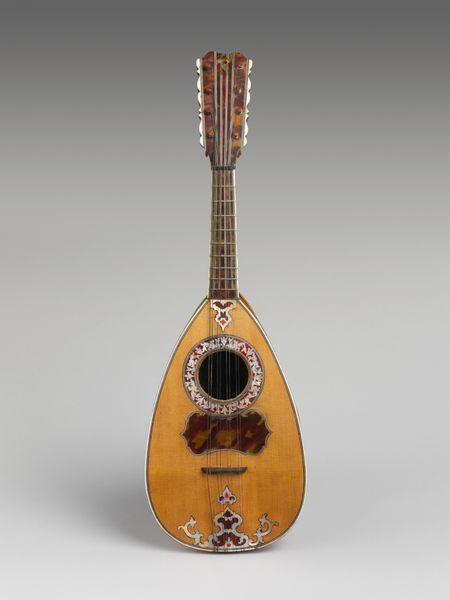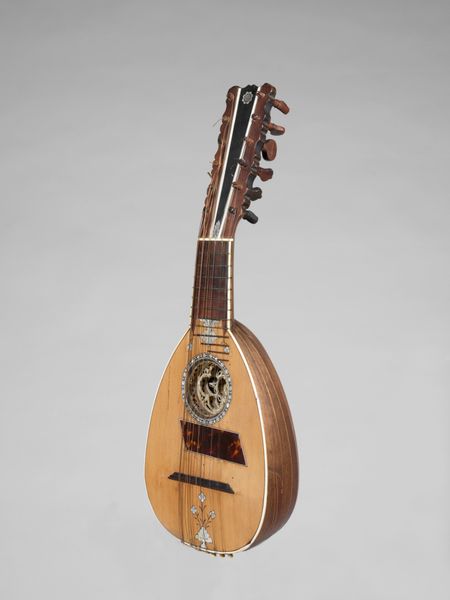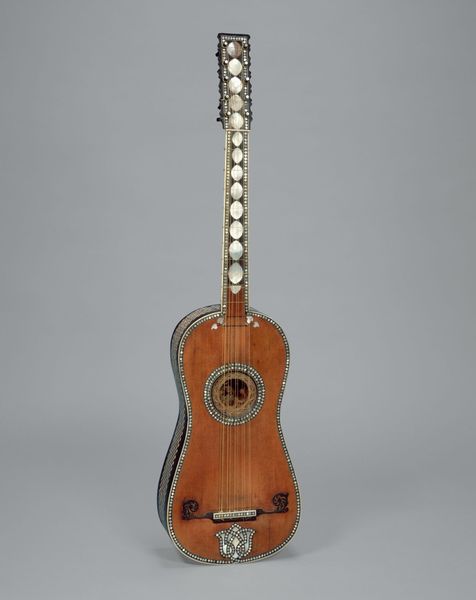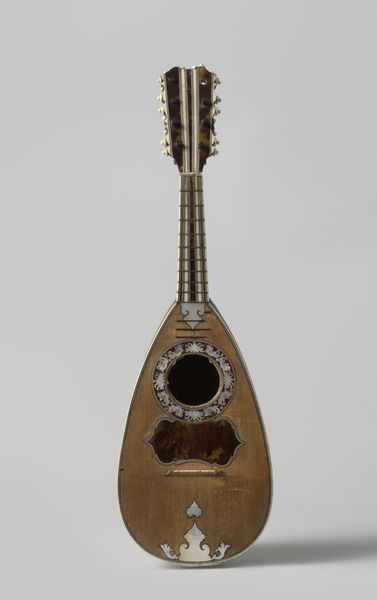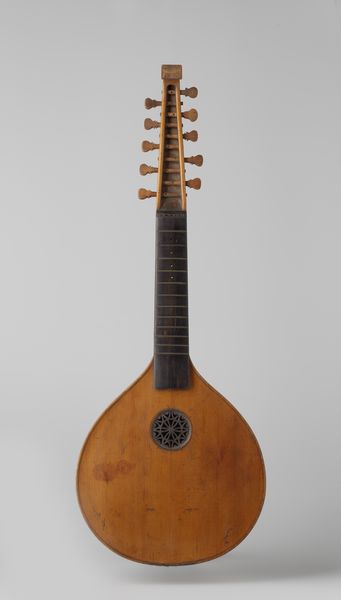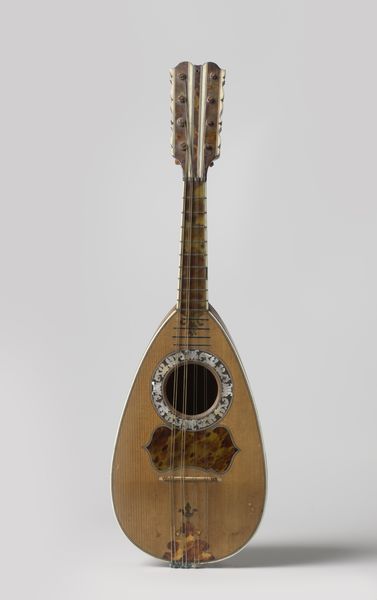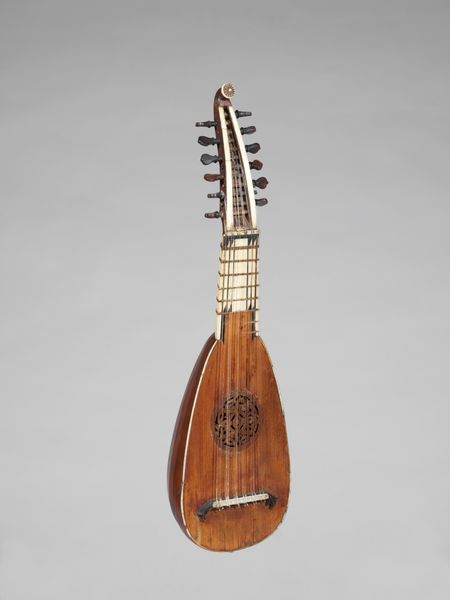
photography, wood
#
still-life-photography
#
photography
#
wood
#
islamic-art
#
musical-instrument
Dimensions: 31 1/2 × 14 5/16 × 7 7/16 in. (80 × 36.4 × 18.9 cm)
Copyright: Public Domain
Curator: The artwork before us is simply titled “Oud,” a photograph taken in 1916 by Manol, also known as Emmanuel Venios. Editor: It’s so strikingly… staged. A photograph, yes, but treated with such meticulous attention to detail and clarity. The texture of the wood and the opalescence of the inlay are brought forward— it’s reverential. Curator: Absolutely. What's fascinating is how this intersects with photographic trends of the early 20th century—pictorialism blurring into a sharper, more documentary aesthetic, particularly around representations of material culture. Here we have what might normally be found on display within an Islamic art context now elevated via this medium of photography. Editor: Considering it was photographed in 1916, during a period of both Ottoman decline and burgeoning nationalism in many regions including Egypt, makes you wonder about the choice of subject—an oud, a traditional instrument emblematic of Arabic and Ottoman musical traditions. Curator: That’s very interesting. It seems this piece acts almost as a preservation of an aesthetic object. A means of maintaining tradition despite the political shifts of the time. Beyond this, however, Manol draws clear parallels between "art" and "craft", especially given photography's place within hierarchies of art practices, at that point. He insists on the visual and material impact that emerges between the interplay of wood, pearl, and careful craftsmanship. Editor: You can almost hear the instrument's absent music by truly examining the textures. I mean, this wasn't just casually documenting. There’s a social message interwoven here about cultural continuity. Curator: It also makes one consider the social circles in which Manol and his works participated: The early twentieth-century Parisian art world, its embrace of different cultural aesthetics… I feel like its very presence on display in our museum brings up many considerations about how we value artistic traditions within various contexts. Editor: Exactly, how socio-political dynamics influence production and consumption of visual symbols— fascinatingly intricate and very worthwhile food for thought, indeed.
Comments
No comments
Be the first to comment and join the conversation on the ultimate creative platform.
